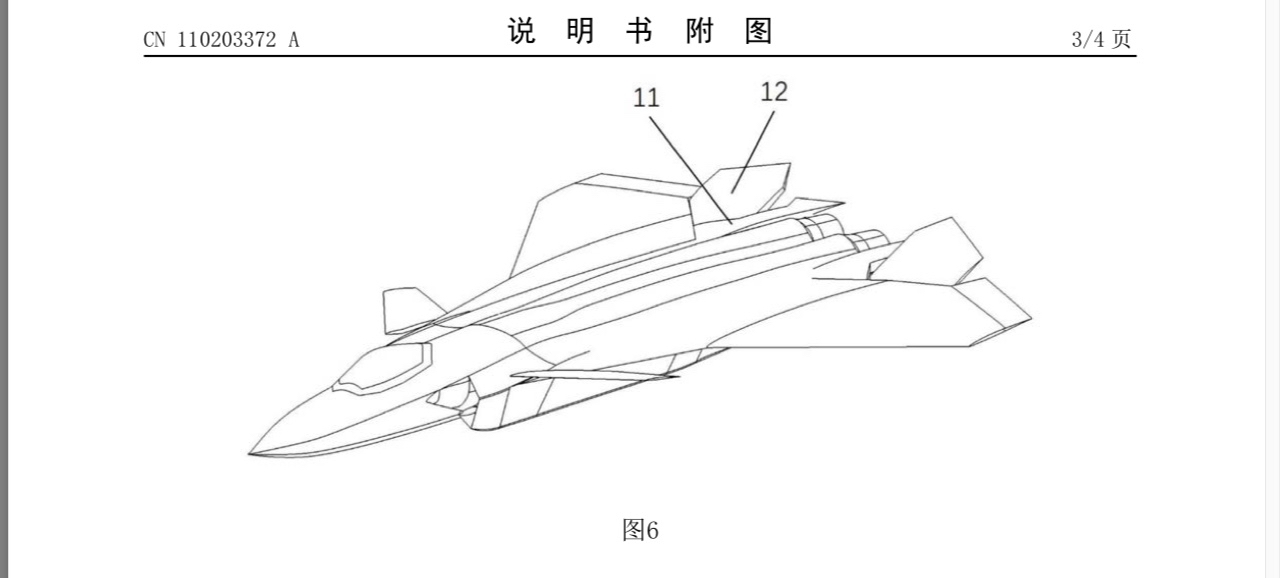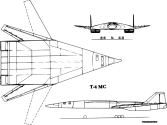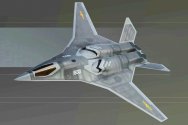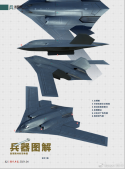You are using an out of date browser. It may not display this or other websites correctly.
You should upgrade or use an alternative browser.
You should upgrade or use an alternative browser.
H-20 bomber (with H-X, JH-XX)
- Thread starter Deino
- Start date
What if it’s not for agility? It could be for stealth, these folding tails could block the view of the engine exhausts from the point of view of an adversary’s IR or Radar.
Fan boy alert: I actually thought that a future J-20 might be able to do this also.
Fan boy alert: I actually thought that a future J-20 might be able to do this also.
by78
General
Wow... a H-20 concept with folding tails? How likely is this?
Is this realistic in any way or just another fancy and futuristic fan-art?
(Image via @pupu-2012 from Weibo)
View attachment 70011
Probably just fan art, but the Chinese have explored this concept.

What if it’s not for agility? It could be for stealth, these folding tails could block the view of the engine exhausts from the point of view of an adversary’s IR or Radar.
Fan boy alert: I actually thought that a future J-20 might be able to do this also.
Folded tail fins can improve controllability at higher velocities. They can function as ventral strakes.
That said I don’t think China will incorporate something so radical on their first stealth bomber.
Last edited:
Having a tail part bend up would increase RCS, not decrease it. And it would only reduce IR signature in a very narrow slice slightly above and to the sides of the engines.What if it’s not for agility? It could be for stealth, these folding tails could block the view of the engine exhausts from the point of view of an adversary’s IR or Radar.
Fan boy alert: I actually thought that a future J-20 might be able to do this also.
Xi Yazhou's take on H-20. His ideas seem fresh so might be worth considering.
First he points to the Soviet T-4MS supersonic bomber project:

This thing, had it been built and hit the on paper specification would have been superior to Tu-160 in almost every way. Same 45 tons of payload, getting to near mach 3 at top speed, more range than Tu-160 if cruising most of the way and still lighter than Tu-160. The secret is in its unique shape: flying wing body with short variable geometry wings. Xi notes that the long, slender shape (as opposed to B-2 and B-21) makes it suitable to carry very large air launched ballistic missiles of perhaps 8,000km range.
T-4MS and to a lesser degree Tu-160 had to have variable geometry wing because their mission called for penetrating extremely heavily defended airspace of a superpower at high supersonic speed while pissing out short range nuclear tipped missile ever which way to destroy every air defence in front of them until they reach their main target. If the requirement for supersonic flight can be removed than the same shape, that of a slender flying wing with short stubby wings would offer some unique advantages.
The vertical stabilizers, if carefully designed and using the right material could be made so that all aspect stealth of the aircraft can be maintained. Vertical stabilizers like that would offer this bomber much better aerodynamic control vs the method used by B-2, and thus make it much better suited to conduct bombing runs with precision-guided bombs when the bomber is not needed for strategic deterrence. When facing mass concentration of tightly clustered troops this bomber would be able to deliver devastating fire power without warning. Xi cheekily describe a scenario where a near future world power conducts a large scale amphibious assault on a scale not seen since the Normandy Invasion against an enemy who has concentrated his ground troops near the expected beachhead, unaware of an approach stealth bomber loaded with large number of JDAM type bombs.
Xi also points out that if equipped with synthetic aperture radar (eg, APQ-181 on the B-2) in the leading wing of the aircraft this bomber can also function in a recon role, mapping out terrain, locating targets and directing swarms of UCAVs while being unnoticed.
Thus by basing the design on T-4MS and sacrificing the supersonic flight in exchange for simplification with no variable geometry wings, Xi proposes that a bomber like this could fill all the requirements that a near future world power might require of this aircraft.
I recall at least one fan art of the H-20 with similar ideas:

First he points to the Soviet T-4MS supersonic bomber project:

This thing, had it been built and hit the on paper specification would have been superior to Tu-160 in almost every way. Same 45 tons of payload, getting to near mach 3 at top speed, more range than Tu-160 if cruising most of the way and still lighter than Tu-160. The secret is in its unique shape: flying wing body with short variable geometry wings. Xi notes that the long, slender shape (as opposed to B-2 and B-21) makes it suitable to carry very large air launched ballistic missiles of perhaps 8,000km range.
T-4MS and to a lesser degree Tu-160 had to have variable geometry wing because their mission called for penetrating extremely heavily defended airspace of a superpower at high supersonic speed while pissing out short range nuclear tipped missile ever which way to destroy every air defence in front of them until they reach their main target. If the requirement for supersonic flight can be removed than the same shape, that of a slender flying wing with short stubby wings would offer some unique advantages.
The vertical stabilizers, if carefully designed and using the right material could be made so that all aspect stealth of the aircraft can be maintained. Vertical stabilizers like that would offer this bomber much better aerodynamic control vs the method used by B-2, and thus make it much better suited to conduct bombing runs with precision-guided bombs when the bomber is not needed for strategic deterrence. When facing mass concentration of tightly clustered troops this bomber would be able to deliver devastating fire power without warning. Xi cheekily describe a scenario where a near future world power conducts a large scale amphibious assault on a scale not seen since the Normandy Invasion against an enemy who has concentrated his ground troops near the expected beachhead, unaware of an approach stealth bomber loaded with large number of JDAM type bombs.
Xi also points out that if equipped with synthetic aperture radar (eg, APQ-181 on the B-2) in the leading wing of the aircraft this bomber can also function in a recon role, mapping out terrain, locating targets and directing swarms of UCAVs while being unnoticed.
Thus by basing the design on T-4MS and sacrificing the supersonic flight in exchange for simplification with no variable geometry wings, Xi proposes that a bomber like this could fill all the requirements that a near future world power might require of this aircraft.
I recall at least one fan art of the H-20 with similar ideas:

Xi Yazhou's take on H-20. His ideas seem fresh so might be worth considering.
First he points to the Soviet T-4MS supersonic bomber project:
View attachment 70259
This thing, had it been built and hit the on paper specification would have been superior to Tu-160 in almost every way. Same 45 tons of payload, getting to near mach 3 at top speed, more range than Tu-160 if cruising most of the way and still lighter than Tu-160. The secret is in its unique shape: flying wing body with short variable geometry wings. Xi notes that the long, slender shape (as opposed to B-2 and B-21) makes it suitable to carry very large air launched ballistic missiles of perhaps 8,000km range.
T-4MS and to a lesser degree Tu-160 had to have variable geometry wing because their mission called for penetrating extremely heavily defended airspace of a superpower at high supersonic speed while pissing out short range nuclear tipped missile ever which way to destroy every air defence in front of them until they reach their main target. If the requirement for supersonic flight can be removed than the same shape, that of a slender flying wing with short stubby wings would offer some unique advantages.
The vertical stabilizers, if carefully designed and using the right material could be made so that all aspect stealth of the aircraft can be maintained. Vertical stabilizers like that would offer this bomber much better aerodynamic control vs the method used by B-2, and thus make it much better suited to conduct bombing runs with precision-guided bombs when the bomber is not needed for strategic deterrence. When facing mass concentration of tightly clustered troops this bomber would be able to deliver devastating fire power without warning. Xi cheekily describe a scenario where a near future world power conducts a large scale amphibious assault on a scale not seen since the Normandy Invasion against an enemy who has concentrated his ground troops near the expected beachhead, unaware of an approach stealth bomber loaded with large number of JDAM type bombs.
Xi also points out that if equipped with synthetic aperture radar (eg, APQ-181 on the B-2) in the leading wing of the aircraft this bomber can also function in a recon role, mapping out terrain, locating targets and directing swarms of UCAVs while being unnoticed.
Thus by basing the design on T-4MS and sacrificing the supersonic flight in exchange for simplification with no variable geometry wings, Xi proposes that a bomber like this could fill all the requirements that a near future world power might require of this aircraft.
I recall at least one fan art of the H-20 with similar ideas:
View attachment 70262
But that's not the H-20 ... it is what might be the regional bomber called JH-XX/JH-18 or even H-18.
I question this statement, how much aerodynamic control does a bomber really need in the age of LGBs?Vertical stabilizers like that would offer this bomber much better aerodynamic control vs the method used by B-2, and thus make it much better suited to conduct bombing runs with precision-guided bombs when the bomber is not needed for strategic deterrence.

